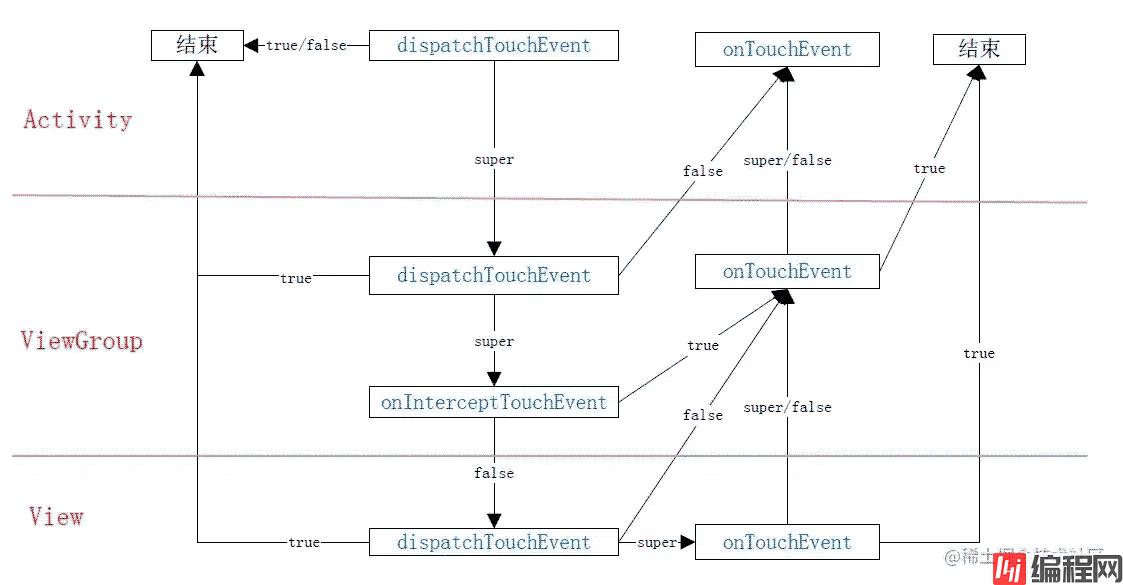目录正文拦截器的自我实现RetryAndFollowUpInterceptorBridgeInterceptorCacheInterceptorConnectInterceptorC
本节我们开始自我实现我们自己okHttp框架中的每个拦截器。
先简单回顾一下各个拦截器的作用:
处理重试的一个拦截器,会去处理一些异常,根据底层返回的响应数据,先进行一些特殊状态码的判断,例如:如果底层返回307,则根据服务端返回的最新location,重新构建新的请求,交由底层拦截器,重新发起请求。如果底层返回路由异常、某些IO异常,则会continue,重新发起请求。
给我们平常发起的请求,添加通用和请求首部信息,做一个简单的处理,设置一些通用的请求头,Cookie、Connection、Content-Type、Content-Length,做一些返回的处理,如果返回的数据被压缩了,采用 ZipSource,保存Cookie。
缓存存储策略、缓存过期策略、缓存对比策略的具体实现。
ConnectInterceptor负责连接复用、建立Socket连接,okio与socket输入输出流绑定。
好了,接下来,把我们之前写的框架的代码,重新梳理一下,新增一下几个拦截器。 RealCall.java
package com.itbird.okhttpstudy.okhttp;
import Android.util.Log;
import com.itbird.okhttpstudy.interceptor.BridgeInterceptor;
import com.itbird.okhttpstudy.interceptor.CacheInterceptor;
import com.itbird.okhttpstudy.interceptor.CallServerInterceptor;
import com.itbird.okhttpstudy.interceptor.ConnectInterceptor;
import com.itbird.okhttpstudy.interceptor.Interceptor;
import com.itbird.okhttpstudy.interceptor.RetryAndFollowUpInterceptor;
import java.io.IOException;
import java.util.ArrayList;
import java.util.List;
public class RealCall implements Call {
private Request request;
private OkhttpClient okhttpClient;
public RealCall(Request request, OkhttpClient okhttpClient) {
this.request = request;
this.okhttpClient = okhttpClient;
}
@Override
public void enqueue(Callback callback) {
okhttpClient.dispatcher().enqueue(new AsyncCall(callback));
}
@Override
public Response execute() {
return getResponseWithInterceptorChain();
}
@Override
public Request request() {
return request;
}
private Response getResponseWithInterceptorChain() {
List<Interceptor> interceptors = new ArrayList<Interceptor>();
interceptors.add(new BridgeInterceptor());// 基础
interceptors.add(new CacheInterceptor());// 缓存
interceptors.add(new ConnectInterceptor());// 建立连接
interceptors.add(new CallServerInterceptor());// 写数据
interceptors.add(new RetryAndFollowUpInterceptor());// 重试
Interceptor.Chain chain = new RealInterceptorChain(this, interceptors, request);
try {
return chain.proceed(request);
} catch (IOException e) {
//处理过程被中断时,通过错误码返回
return null;
}
}
class AsyncCall extends NamedRunnable {
private Callback callback;
public AsyncCall(Callback callback) {
this.callback = callback;
}
@Override
public void execute() {
Log.d(Constants.TAG, "AsyncCall execute");
//这里有问题的
Response response = getResponseWithInterceptorChain();
if (callback != null) {
try {
callback.onResponse(RealCall.this, response);
} catch (IOException e) {
}
}
}
}
}
接下来还是老办法,按照AS提示,新建这些类。
package com.itbird.okhttpstudy.interceptor;
import android.util.Log;
import com.itbird.okhttpstudy.okhttp.Constants;
import com.itbird.okhttpstudy.okhttp.Request;
import com.itbird.okhttpstudy.okhttp.Response;
import java.io.IOException;
public class RetryAndFollowUpInterceptor implements Interceptor {
@Override
public Response intercept(Chain chain) throws IOException {
Log.d(Constants.TAG, "RetryAndFollowUpInterceptor");
Request request = chain.request();
//okhttp表现为,此处,去根据底层抛出的异常,决定是否为关键错误异常,如果不是,则while true循环,去执行重试请求
return chain.proceed(request);
}
}
package com.itbird.okhttpstudy.interceptor;
import android.util.Log;
import com.itbird.okhttpstudy.okhttp.Constants;
import com.itbird.okhttpstudy.okhttp.Request;
import com.itbird.okhttpstudy.okhttp.RequsetBody;
import com.itbird.okhttpstudy.okhttp.Response;
import java.io.IOException;
public class BridgeInterceptor implements Interceptor {
public BridgeInterceptor() {
}
@Override
public Response intercept(Chain chain) throws IOException {
Log.d(Constants.TAG, "BridgeInterceptor");
Request request = chain.request();
// 添加一些请求头
// request.addParam("Connection", "keep-alive");
// 做一些其他处理
if (request.requsetBody() != null) {
RequsetBody requestBody = request.requsetBody();
request.addParam("Content-Type", requestBody.getContentType());
request.addParam("Content-Length", Long.toString(requestBody.getContentLength()));
}
//GZIP数据流转换
return chain.proceed(request);
}
}
package com.itbird.okhttpstudy.interceptor;
import android.util.Log;
import com.itbird.okhttpstudy.okhttp.CacheControl;
import com.itbird.okhttpstudy.okhttp.Constants;
import com.itbird.okhttpstudy.okhttp.Request;
import com.itbird.okhttpstudy.okhttp.Response;
import java.io.IOException;
public class CacheInterceptor implements Interceptor {
public CacheInterceptor() {
}
@Override
public Response intercept(Chain chain) throws IOException {
Log.d(Constants.TAG, "CacheInterceptor");
Request request = chain.request();
if (request.cache() == CacheControl.FORCE_CACHE) {
//本地缓存有没有,缓存过期了没有,缓存对比服务器返回307
}
return chain.proceed(request);
}
}
package com.itbird.okhttpstudy.interceptor;
import android.util.Log;
import com.itbird.okhttpstudy.okhttp.Constants;
import com.itbird.okhttpstudy.okhttp.Request;
import com.itbird.okhttpstudy.okhttp.Response;
import java.io.IOException;
public class ConnectInterceptor implements Interceptor {
public ConnectInterceptor() {
}
@Override
public Response intercept(Chain chain) throws IOException {
Log.d(Constants.TAG, "ConnectInterceptor");
Request request = chain.request();
//表现为okhttp的话,这里就是socket简历连接,并且将socket输入输出流与okio绑定在一起
return chain.proceed(request);
}
}
package com.itbird.okhttpstudy.interceptor;
import android.util.Log;
import com.itbird.okhttpstudy.okhttp.Constants;
import com.itbird.okhttpstudy.okhttp.Request;
import com.itbird.okhttpstudy.okhttp.Response;
import java.io.IOException;
import java.io.InputStream;
import java.net.HttpURLConnection;
import java.net.MalfORMedURLException;
import java.net.URL;
public class CallServerInterceptor implements Interceptor {
public CallServerInterceptor() {
}
@Override
public Response intercept(Chain chain) throws IOException {
Log.d(Constants.TAG, "CallServerInterceptor");
Request request = chain.request();
try {
//获取连接请求
URL url = new URL(request.url());
HttpURLConnection httpURLConnection = (HttpURLConnection) url.openConnection();
//设置连接超时
httpURLConnection.setConnectTimeout(3000);
//设置方法
httpURLConnection.setRequestMethod(request.method());
if (request.requsetBody() != null) {
httpURLConnection.setRequestProperty("Content-Type", request.requsetBody().getContentType());
httpURLConnection.setRequestProperty("Content-Length", String.valueOf(request.requsetBody().getContentLength()));
Log.d(Constants.TAG, httpURLConnection.getRequestProperty("Content-Length"));
Log.d(Constants.TAG, httpURLConnection.getRequestProperty("Content-Type"));
}
//开始连接
httpURLConnection.connect();
//插入,如果requsetbody不为空,则继续写入内容
if (request.requsetBody() != null) {
request.requsetBody().writeBodyData(httpURLConnection.getOutputStream());
}
//判断返回的状态码
if (httpURLConnection.getResponseCode() == 200) {
//获取返回的数据
InputStream inputStream = httpURLConnection.getInputStream();
//将返回的数据,封装为response
Response response = new Response(inputStream);
return response;
}
} catch (MalformedURLException e) {
throw e;
} catch (IOException e) {
throw e;
}
return null;
}
}

说到责任链模式,这里有一个题外话,我们之前分析view事件源码的时候,也看到过,view 事件源码,也是责任链机制,它是通过每层返回true、false来决定是否拦截。

大家想一下,和okhttp这里的责任链有啥不同的?我们上面查看okhttp源码的时候知道,它并不是通过每层返回true or false来决定是否拦截的,而是根据每层返回的response 以及 是否抛出异常来决定是否拦截。
以上就是OKhttp拦截器实现实践环节源码解析的详细内容,更多关于OKhttp 拦截器实现的资料请关注编程网其它相关文章!
--结束END--
本文标题: OKhttp拦截器实现实践环节源码解析
本文链接: https://www.lsjlt.com/news/176837.html(转载时请注明来源链接)
有问题或投稿请发送至: 邮箱/279061341@qq.com QQ/279061341
下载Word文档到电脑,方便收藏和打印~
2024-01-21
2023-10-28
2023-10-28
2023-10-27
2023-10-27
2023-10-27
2023-10-27
回答
回答
回答
回答
回答
回答
回答
回答
回答
回答
0